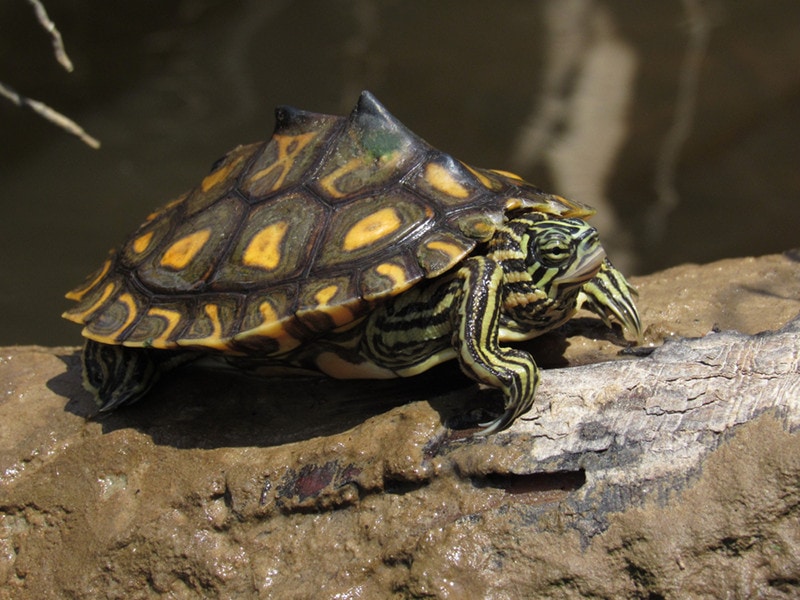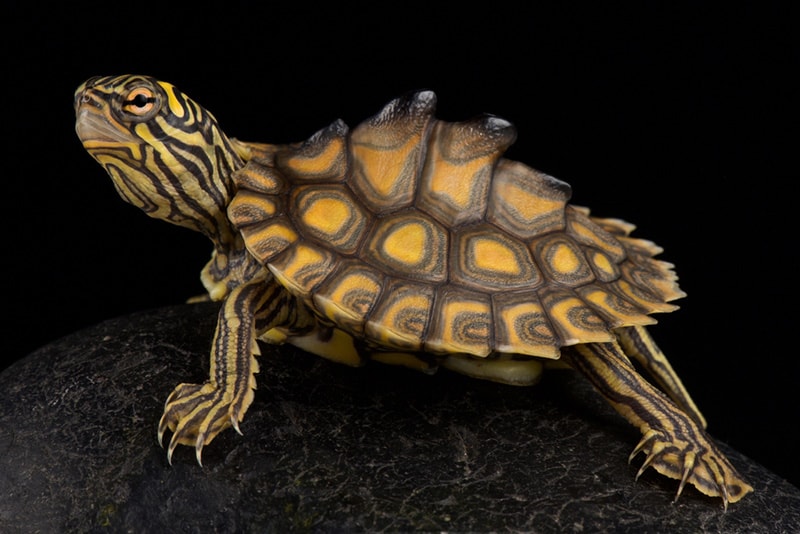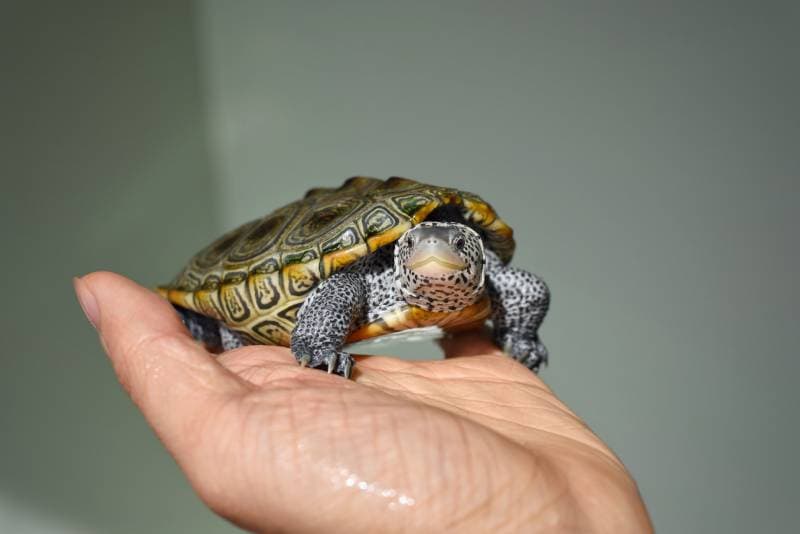How Big Do Map Turtles Get? Average Weight & Growth Chart
By Ed Malaker
Updated on

Click to Skip Ahead
Map turtles, also known as Graptemys turtles, are a group of semi-aquatic turtles native to North America. They can also make great pets, which causes many people to wonder how big they can get. Since there are several species, their size can vary, but most are 4–10 inches long. Keep reading as we look at several varieties, discuss their growth rate, and how to measure them to help you be better informed.
Map Turtle Overview
Map turtles have distinct markings on their shells that resemble maps, which is where they get their name. They are small to medium-sized turtles, with adult males reaching about 3.5–5 inches in carapace length, while adult females can grow slightly larger, ranging from 6–10 inches. Popular map turtle species include the northern, Ouachita, and Mississippi map turtles.

Map Turtle Size & Growth Chart
This size and growth chart is for the northern map turtle, a species native to North America that has yellow or light green lines on their shell that resemble a map. Other map turtles, like the Ouachita and Mississippi, may have slightly different growth patterns and size ranges.
| Age in Years | Weight Range | Length Range |
| 1 | 0.35–0.7 ounces | 1.5–2.5 inches |
| 2 | 0.7–1.4 ounces | 2.5–3.5 inches |
| 3 | 1.4–2.1 ounces | 3.5–4.5 inches |
| 4 | 2.1–2.8 ounces | 4.5–5.5 inches |
| 5 | 2.8–3.5 ounces | 5.5–6.5 inches |
| 5+ | 3.5–8.8 ounces | 6–10 inches |
When Does a Map Turtle Stop Growing?
Like many turtle species, map turtles continue to grow throughout their lives, but their growth rate slows as they reach adulthood. The exact age at which a map turtle stops growing can vary depending on the species, individual genetics, diet, and environmental conditions. In general, map turtles reach their full adult size by the time that they are 5 years old. At this point, their growth rate significantly slows down, and they may continue to grow slowly or maintain their size for the rest of their lives. However, it’s worth noting that some turtles may experience minor growth, even after reaching adulthood, at a much slower pace.

Factors Affecting the Size of a Map Turtle
Different species of map turtles have varying size ranges. Some, like the northern map turtle, tend to be small, while others, such as the Mississippi map turtle, can reach large sizes. In many turtle species, females tend to be larger than males, and the quality of the turtle’s habitat, including water quality, temperature, and space, can influence their growth. A map turtle’s overall health and well-being can also impact their growth, so regular visits to the vet are important when keeping them as a pet.
Ideal Diet for Maintaining a Healthy Weight
High-quality commercial turtle pellets specifically formulated for aquatic turtles can be a staple of a map turtle’s diet. Look for pellets that balance proteins, vitamins, minerals, and other essential nutrients, and follow the manufacturer’s instructions for portioning based on the turtle’s size. Supplement the commercial pellets with various protein sources like earthworms, mealworms, crickets, and small fish as occasional treats. Feeding them protein-rich foods in moderation will help meet their dietary needs without leading to excessive weight gain. Leafy greens and vegetables, including kale, collard greens, dandelion greens, mustard greens, and shredded carrots, provide fiber, vitamins, and minerals while also helping to maintain a balanced diet. Fruits have a higher sugar content but as treats, can add variety and flavor to the turtle’s diet.

How to Measure Your Map Turtle
- Use a ruler or a tape measure that has clear markings.
- Gently and securely hold your map turtle with both hands, supporting their body and shell. Avoid putting too much pressure on the turtle to ensure their comfort and safety during the measuring process.
- The carapace is the top part of the turtle’s shell. Place the measuring device at the starting point of the carapace, usually the tip of the shell, and extend it along the centerline of the shell to the other end. Read the measurement to get the carapace length.
- The plastron is the bottom part of the turtle’s shell. If you want to measure its length, repeat the same process as for the carapace, but this time, measure along the centerline of the plastron.
- Once you have obtained the carapace and/or plastron length, record the measurements for future reference. It can be helpful and fun to keep track of your turtle’s growth or monitor any changes in size over time.
Conclusion
There are many species of map turtles, and their size can range, but they are usually small to medium-sized turtles that grow to be 3.5–10 inches, with females being larger than males. They grow slowly, usually only 1 inch or less per year, not reaching full size for 5 years or more, with many growing slowly throughout their lives. They have attractive and unusual map-like designs on their shell and make great pets.
Featured Image Credit: Gabbie Berry, Shutterstock












